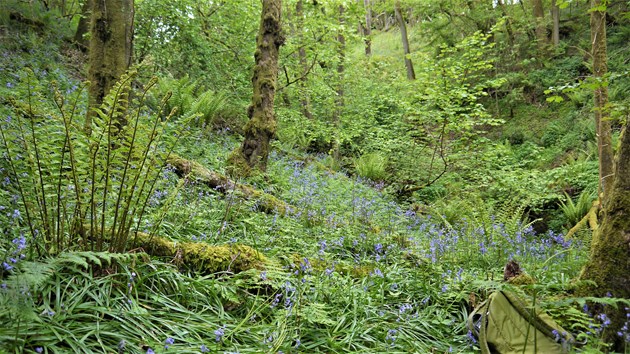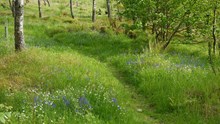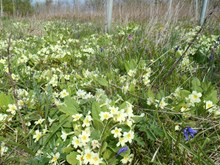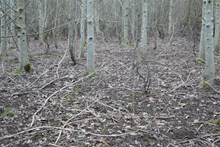18 May, 2021
Flower power to transform woodlands

A new guide shows how the transformation of newly-planted native woods into beautiful and biodiverse places can be helped by planting common woodland wild flowers and grasses.
The comprehensive step-by-step guidance aims to speed up the natural colonisation of important woodland flora into newly planted woods.
Published today by NatureScot, the work is funded by the Patsy Wood Trust and supported by Scottish Forestry, Plantlife Scotland, Scotia Seeds and Stirling University.
With just 4% of Scotland comprising native woodland, the Scottish Government is prioritising tree planting to address the climate and biodiversity crises with incentives to encourage uptake.
Planting of new broadleaved woodland can often take place on former agricultural land, but it can take decades or even centuries for these sites to acquire much-loved woodland plants.
The guide recommends that small populations of key common woodland plants such as dog violet, bluebells, wild garlic and primrose are sown or planted; with these chosen carefully to match the woodland type and soil conditions. These small populations are then encouraged to spread naturally over time, enriching the habitat and creating a more attractive space for people to enjoy.
NatureScot Woodlands Officer Kate Holl said: “When native trees are planted it can often take decades for other woodland species to appear. We can give nature a helping hand by planting wildflowers and grasses to speed up the process and boost biodiversity.
“We need to build on our precious existing ancient woodlands which are home to dozens of species of colourful woodland flowers.
“Once we thought that if we waited long enough the flowers would appear, but experience from the past 40 years has shown that this rarely works.
“This guide shows that when well-planned and implemented, introducing flowers and other plants to certain woods can kick start this process, greatly improving woodland biodiversity, helping threatened pollinators and making a real contribution to tackling the nature crisis.”
Lead author and woodland consultant Rick Worrell, said: “Unfortunately woodland plants find it very hard to spread naturally in our current landscape. This is because they often rely on woodland insects, like ants, to spread their seed; and ants aren’t able to cross farmland and carry seed from wood to wood. This new guidance has people stepping in to give a helping hand.”
Colin Edwards, Scottish Forestry’s Environment Policy Advisor said: “We recognise the immense ecological value in developing a native ground flora at the same time as establishing new woodland through planting. Woodlands are complex systems, so any assistance we can give to creating these natural habitats is welcomed.”
ENDS
Contact information
- Name
- NatureScot Media
- Telephone
- 0131 316 2655
- media@nature.scot
Notes to editors
The guide includes advice for selecting and planting woodland flora, highlights the importance of plant genetics, health and biosecurity and sets out the need to consider wider factors including the need for deer management. Read the full document here:https://www.nature.scot/doc/naturescot-research-report-1211-establishing-woodland-plants-broadleaved-woods-interim-best-practice
NatureScot is Scotland's nature agency. We work to enhance our natural environment in Scotland and inspire everyone to care more about it. Our priority is a nature-rich future for Scotland and an effective response to the climate emergency. For more information, visit our website at www.nature.scot or follow us on X at https://x.com/NatureScot
’S e NatureScot buidheann nàdair na h-Alba. Bidh sinn a’ neartachadh àrainneachd na h-Alba agus a’ brosnachadh dhaoine gu barrachd suim a chur ann an nàdar. Tha e mar phrìomhachas againn gum bi nàdar na h-Alba beairteach agus gun dèilig sinn gu h-èifeachdach le èiginn na gnàth-shìde. Tha an tuilleadh fiosrachaidh aig www.nature.scot no air X aig https://x.com/NatureScot
Downloads

In ancient woodland there is a rich variety of attractive woodland plants such as bluebell – which flower in the spring and early summer. ©Rick Worrell

Bluebells (grown from seed) and Greater Stitchwort (grown from seed and cuttings) introduced under young birch trees in a woodland near Aberfeldy, Perthshire. ©Rick Worrell


